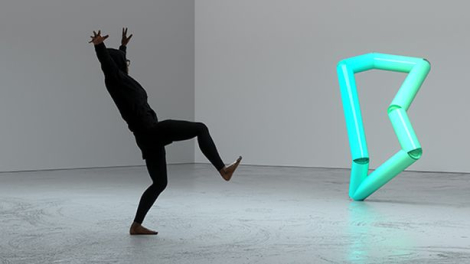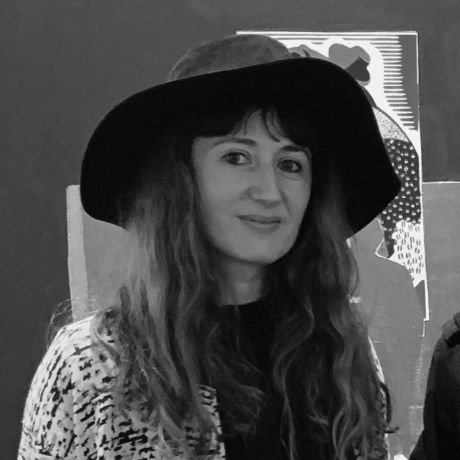Living with AI
- Culture Folder
- Exhibitions
- Oct 23
- 5 mins

Under the banner of artificial intelligence, the world is being reconstructed on the basis of neurons, memories, imagination and thoughts, but also chips, databases, computational forecasts and algorithms. The Centre de Cultura Contemporània de Barcelona (CCCB) is getting down to work with an exhibition that shows both the virtues and the perils of this technology.
—Are you in love with anybody else?
—Why do you ask that?
—I do not know. Are you?
—I’ve been thinking about how to talk to you about this.
—How many others?
—641.
This conversation between Theodore and Samantha, a middle-aged white man and an operating system, appears in one of the most harrowing scenes of Her, a film written and directed by Spike Jonze. It was released just ten years ago and is considered one of the pioneer films in portraying love in the 21st century.
 Machine Learningshows, through a series of videos, how people can teach machines to move. © Universal Everything, 2018
Machine Learningshows, through a series of videos, how people can teach machines to move. © Universal Everything, 2018In the two-plus decades of this century, artificial intelligence has seeped into all realms of life: from the intimacy of a couple to education, artistic creation, scientific research, the media, entertainment, medicine, economics, politics… Human intelligence no longer holds a monopoly in a world that is also being reconstructed by artificial intelligence. And this very world is no longer a near future, but an immediate present that is built on neurons and chips, memories and databases, imagination and computational forecasts, thoughts and algorithms. Are humans ready to interact with it safely? Where do we end and where does artificial intelligence begin? Is it really capable of learning? Is it creative? Is it sustainable? Can it make decisions independently of human participation? These are some of the many questions posed by Artificial Intelligence, the CCCB’s major exhibition this autumn, which, in part, is fed by the exhibition AI: More Than Human, presented in 2019 at the Barbican Centre in London. But, spoiler alert, the answers are not here, only the desire to make visitors engage in reflection from an intersection as complex as it is appealing, linking history, art and science.
In human history there have been many precedents for the creation of artificial life, whether through magic, religion or literature.
The generic concept of artificial intelligence inevitably brings us back to science fiction films and the paranoia of the robotic apocalypse. But in human history there have been many precedents for the creation of artificial life, whether through magic, religion or literature. Who hasn’t been fascinated by Frankenstein? Or Golem? The historical account – which here ranges from religious traditions of Judaism and Shintoism to Arab alchemy and Gothic philosophies – is one of the exhibition’s main lines of discourse. “If any object can have a soul for a Japanese Shintoist, why can’t a machine have one?” This would explain, in part, why in Eastern culture the everyday relationship with robots is more commonplace than in the Western world, asserts the multidisciplinary researcher Lluís Nacenta, curator of Artificial Intelligence.
Imitating how the brain works
Another focus of the exhibition is the evolution of computing, rooted in the human obsession no longer with deciphering the brain but with imitating how it works. This is how we went from the first calculating machines to the creation of artificial neural networks, which are nothing more than computer programmes that, over time, learn to learn. “Artificial intelligence does not do everything. It needs humans. Creatively, it is a machine to imitate. In fact, on its own, it is a pretty mediocre performer. People are afraid that artificial intelligence will take their jobs, but the people who will take their jobs are the humans who are able to use it,” Nacenta claims, who does not hide its dark sides: autonomous weapons, facial recognition, political manipulation, the precarious jobs behind the big data banks, the sexism inherent in choosing female voices for operating systems when there are sexual or service connotations… “Talking about all this is not as sexy as talking about the robotic apocalypse of science fiction films, but we must do so, and in this exhibition we do. We need to open debates about the ethics and regulation surrounding this technology,” he says.
 Aibo, Sony’s robot dog, has been on the market for 20 years now, with different updates. © Sony Corporation
Aibo, Sony’s robot dog, has been on the market for 20 years now, with different updates. © Sony CorporationThe meeting point between art and science is the focus of the exhibition. Who is the artist and who is the assistant in a creation generated by Midjourney? According to Nacenta, authorship should be split 50/50. “It’s a collaboration, one cannot exist without the other. Although there is a tendency to hide it, artificial intelligence features considerable human intervention, but we like to say that it is a robot,” he says ironically. Some of the artistic works exhibited at the CCCB have already been seen at the Barbican Centre, such as Es Devlin’s portrait poems or the meticulous work of Anna Ridler, who, with the manual classification of ten thousand tulips she photographed herself, lays bare the precarious labour that lies behind the enormous data banks.
In order to show the potential of Barcelona and Catalonia as a hub for artificial intelligence, Nacenta has also worked alongside the Barcelona Supercomputing Center (BSC), led by Jordi Torres and his team. A collaboration that has crystallised with an installation around the singer Maria Arnal, who has generated an artificial alter ego that can reach more vocal registers than the real one and with which visitors will be able to interact. However, the list of artists is longer: Massive Attack, Mario Klingemann, Neri Oxman, Joy Buolamwini, Yoichi Ochiai, Kode9, Chris Salter… Each one, from their respective fields, shows how the power of art to decipher the complexity of the world is still intact. Even when it comes to artificial intelligence.
Artificial Intelligence
18 October 2023 to 17 March 2024. Centre de Cultura Contemporània de Barcelona
Original exhibition curated and organised by the Barbican Centre (City of London Corporation) and co-produced by Forum Groningen (Netherlands). Adapted by the CCCB and the Barcelona Supercomputing Center (BSC).
The newsletter
Subscribe to our newsletter to keep up to date with Barcelona Metròpolis' new developments




